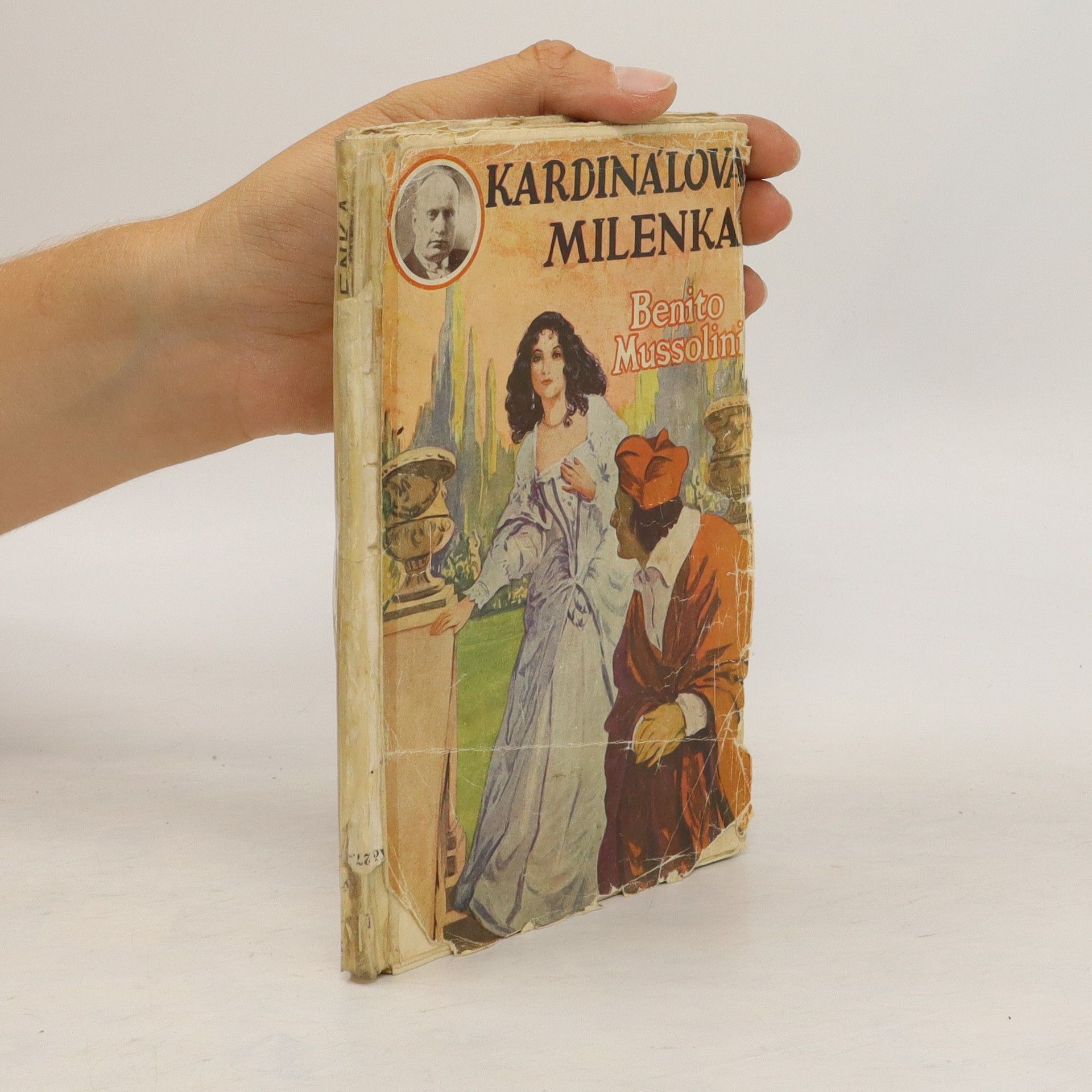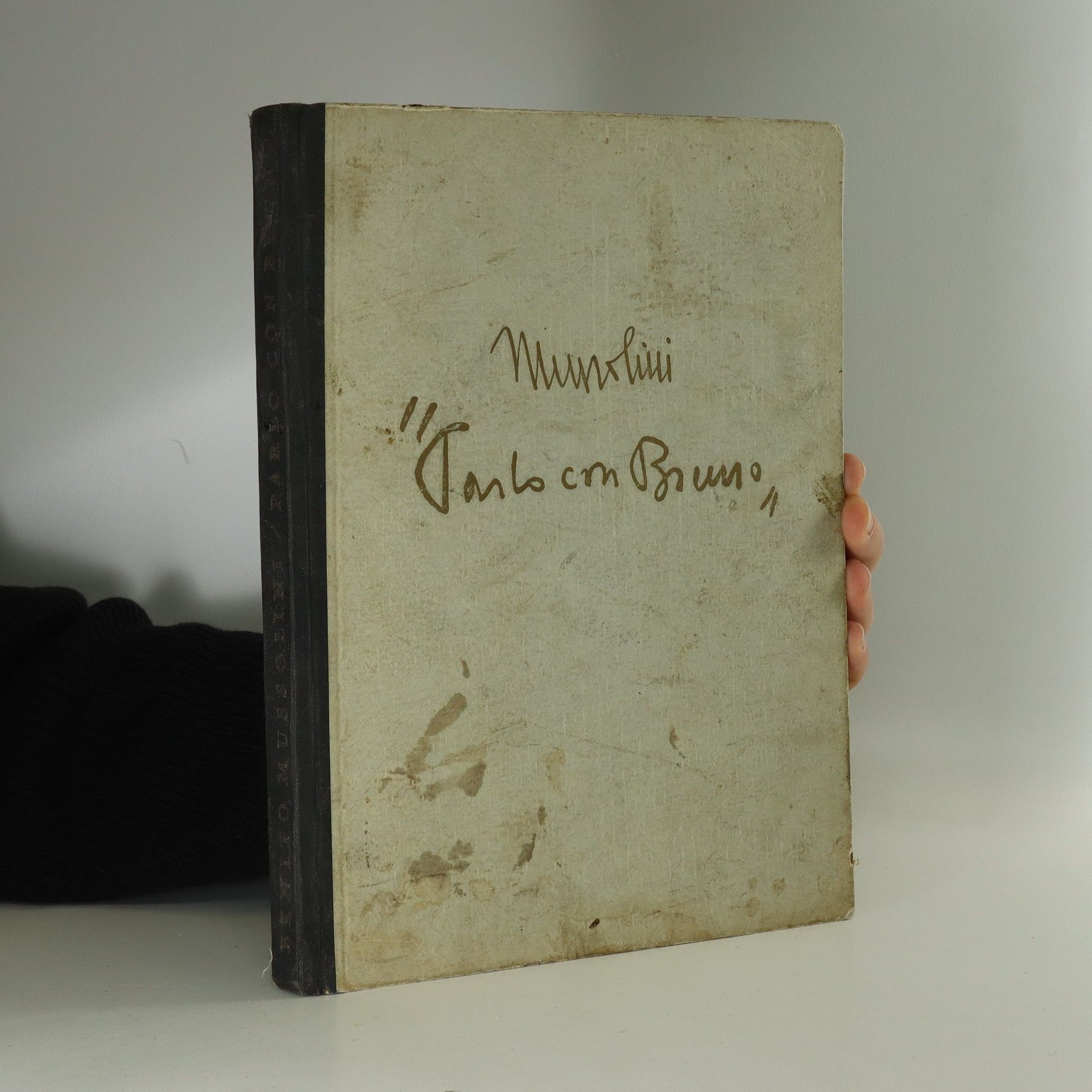Mussoliniho kniha o jeho synovi, slavném pilotovi, který zahynul při testování nového bombardéru v roce 1941.
Benito Mussolini Knihy
Tento autor je známý svou politickou dráhou a novinářskou prací, která formovala literární a politickou krajinu své doby. Jeho díla zkoumají složité společenské a ideologické proudy, přičemž se zaměřují na témata moci, identity a radikálních společenských změn. Charakteristickým rysem jeho psaní je pronikavá analýza lidské psychologie v kontextu masových hnutí a politických otřesů. Čtenáři ocení jeho schopnost zachytit napětí mezi individuální svobodou a kolektivní akcí.







Hra o třech dějstvích, doba děje od 31. května do 29. června 1815.
Claudia Particella, milenka kardinála & Novellette perverse
- 141 stránek
- 5 hodin čtení
Dvě novely, související s tridentským pobytem mladého Mussoliniho. " Novellette perverse", tedy zvrácené novely, tak se mělo jmenovat jejich souborné vydání. To se nikdy neuskutečnilo, a tak světlo světa spatřili pouze dvě. První z nich, původně nazvaná "Sebevrah" vyšla na pokračování pod názvem "Nic není opravdové, vše je dovoleno" během dubna a května 1909 v týdeníku " Vita Trentia, jenž byl přílohou deníku "Il Popolo". V něm byla vydáná i povídka "Svatební jízda." Přestože terčem těchto příběhů je pokrytectví a povrchnost bohatší společnosti, nelze zcela vyloučit, že se v nich v některých detailech projevil i sám autor.
My Autobiography
- 272 stránek
- 10 hodin čtení
This memoir recounts the Italian dictator's years as an agitator, journalist, and soldier, the formation of the Fascist Party, the "March on Rome," and his early years in power. It articulates Il Duce's vision of his nation's return to glory and includes his definitive statement on the doctrine of Fascism and its political justification. 8 illustrations.
The Doctrine of Fascism
- 50 stránek
- 2 hodiny čtení
Focusing on the ideological foundations of fascism, this essay, attributed to Benito Mussolini but written by Giovanni Gentile, argues for a political shift from 19th-century individualism to a 20th-century emphasis on authority and the collective state. Published in the 1932 Enciclopedia Italiana, it serves as a cornerstone for understanding fascist doctrine, contrasting previous political models like socialism and liberalism. The text is part of a broader entry on fascism, featuring extensive illustrations and a comprehensive exploration of its principles.
The Time of the Stick and the Carrot
Story of a Year, October 1942 to September 1943
- 168 stránek
- 6 hodin čtení
Focusing on the pivotal year from October 1942 to September 1943, this historical work details the military and political crises in Italy that culminated in Benito Mussolini's overthrow and the decline of Fascism. It provides an in-depth analysis of the events and dynamics that shaped this transformative period in Italian history, offering valuable insights into the factors that led to significant political change.
Colloqui con Mussolini
- 181 stránek
- 7 hodin čtení
Conversations with Mussolini that Emil Ludwig (originally Emil Cohn) published in 1932.

